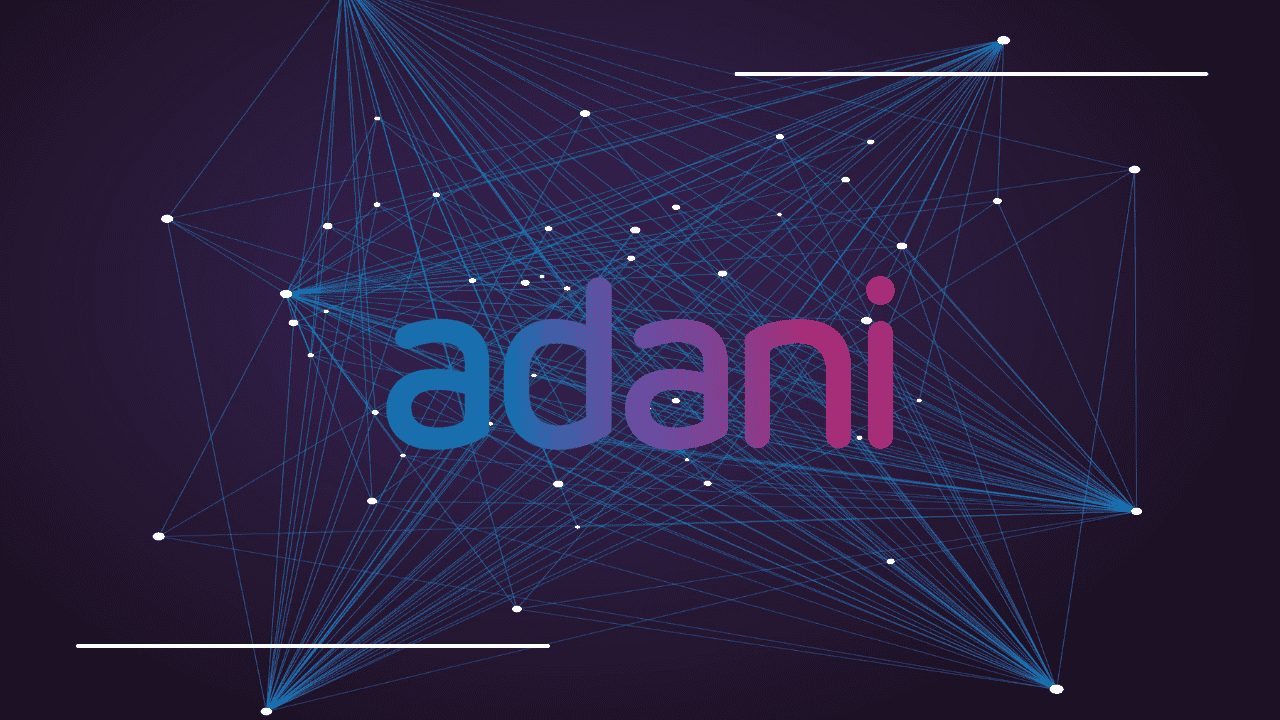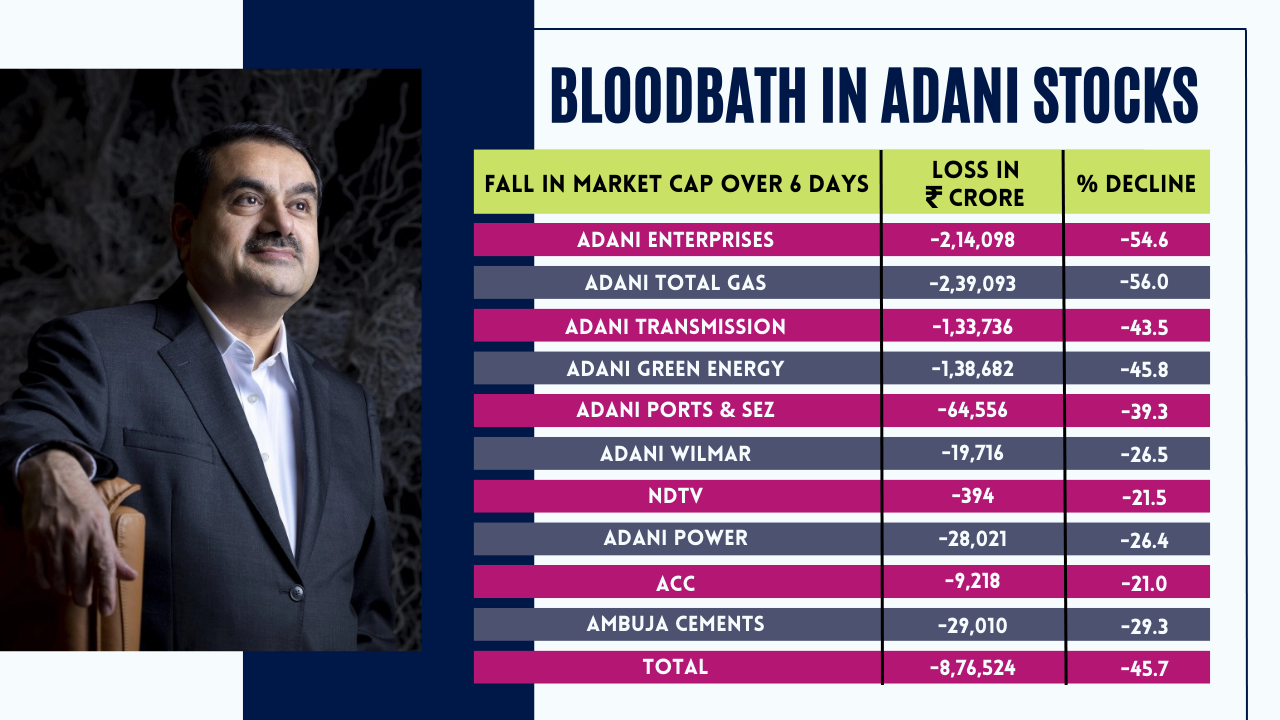Adani group: Fundamental Analysis

Last Updated: 10th February 2023 - 01:10 pm
Even if you lived under a rock, you wouldn’t have missed the highlights of Adani drama. Adani and the Hindenburg clash is the matter of the moment. The high-profile clash was closely observed by market watchers and was so controversial that it overshadowed the Budget. So, we at 5Paisa decided to do an in-depth analysis of the Adani group and we will further discuss the whole controversy.
It all started began on 24 January, when US-based short-seller Hindenburg Research published a report accusing the company of stock-price manipulation and accounting fraud.
Now before we move into the accusations by Hindenburg on Adani, it’s important to know a bit about Hinderburg's research.
Well, it is a short seller. Short selling is when you borrow a security whose price you think is going to fall from your brokerage and then you sell it on the open market. The plan is to then buy the same stock back later, hopefully for a lower price than you initially sold it for, and pocket the difference after repaying the initial loan.
As an example, let's say that you decide that Company ABC which trades for $100 per share, is overpriced. So, you decide to short the stock by borrowing 10 shares from your brokerage and selling them for a total of $1,000. If the stock proceeds to go down to $90, you can buy those shares back for $900, return them to your broker, and keep the $100 profit.
That’s the business model of Hindenburg my friend. The company first Short sells the securities of a company. Then it releases a damning report on the company in which they tell their rationale behind shorting the company, thereby creating a negative sentiment in the market. And when the stock price of the company tanks, they profit from it.
So, if you thought that Hindenburg released this report as a public service to the investors, you were highly mistaken, my friend.
Coming to the accusations of Hindenburg.
According to a two-year investigation conducted by a research firm, the Indian conglomerate Hindenburg has been accused of various financial improprieties. The investigation resulted in a 100-page report, which outlines the following allegations:
• The company controls 38 shell entities in tax havens like Mauritius, managed by Vinod Adani or his associates.
• It utilizes its offshore network to manipulate earnings.
• It has been involved in four major government investigations regarding fraud allegations.
• Having its enterprises, Adani Enterprises and Adani Total Gas, audited by a small firm with limited capabilities, which has only audited one other listed firm.
The report also highlights that a significant amount of offshore funds, primarily located in Mauritius, own shares in the Adani Group worth Rs 36,000 crore ($4.5 billion), but these funds are not independently managed and have common owners. The report states that three funds, Monterosa, Elara, and New Leaina, engage in circuitous trading and manipulation of Adani Group stocks.
Furthermore, the Adani Group, with over 578 subsidiaries, is accused of using related-party transactions to transfer money, increase earnings, and support its entities. Although the group discloses some related-party transactions, several others are not reported, and entities with no apparent business purpose are reportedly present on the balance sheet of publicly-listed Adani Enterprises after passing through an operating Adani private entity.
The aftermath of the controversy was a bloodbath in Adani group stocks. Most of its group companies lost more than 40% of their market capitalization in a week.

Additionally, the conglomerate cancelled its planned Rs 20,000 crore follow-on public offering of Adani Enterprises, which was fully subscribed, and announced that it would return the money to subscribers.
But what exactly is going on with the Adani Group? Is there any truth to these allegations? One way to find out is through a process known as Fundamental Analysis. This type of analysis looks at various financial metrics to help determine a company's financial health. Here are some ratios that will provide you insight into the company’s financial health.
Debt/CFO:
The high debt levels of Adani group companies have been a concern for market watchers. To determine the sustainability of the debt, one can look at the Debt/Cashflow from operations metric. This metric shows the amount of debt a company has for every rupee of its cash flow from operations and gives an idea of the company's ability to repay its debt through its cash flow. For example, Adani Green Energy's Debt/CFO is 17, meaning that for every one rupee of cashflow it generates, it has Rs. 17 in debt. Some Adani companies have higher Debt/CFO ratios, such as Adani Enterprises with 29 and Adani Transmission with 7, while others like Adani Ports and Adani Power have acceptable levels of 4.64 and 4.7.
CFO/PAT:
A company may make a sale today but not receive payment immediately. Accounting standards allow the sale and its profits to be reported in the P&L, but the money received from the buyer will only be reflected in the CFO when it is actually received. Over time, cumulative PAT and CFO should be similar, indicating that the company is able to collect its profits in actual cash from its buyers. If the CFO is significantly lower than the PAT, it may mean that either the company is unable to collect its profits or that the profits are fictitious. In either case, investors should avoid such a company.
The CFO/PAT ratio can give insight into whether Adani group companies are able to convert their profits into cash. Adani Enterprises has an average CFO/PAT ratio of 5.51 over the past five years, while Adani Total Gas has a ratio of 1.39 and Adani Transmission has a ratio of 3.67. Most Adani companies have CFOs that are higher than their net profits, which is a positive sign.
Here is a summary of the financial positions of some of these companies:
Adani Gas: Total debt is ₹1,203 crore and cash on hand is ₹398 crore. Net sales are ₹4,053 crore with a net profit of ₹507 crore. Total market cap is ₹178,824 crore and the P/E ratio is 353.
Adani Green: Total debt is ₹52,041 crore and cash on hand is ₹1,444 crore. Net sales are ₹5,863 crore with a net profit of ₹533 crore. Total market cap is ₹147,988 crore and the P/E ratio is 271.
Adani Transmission: Total debt is ₹33,600 crore and cash on hand is ₹1,985 crore. Net sales are ₹11,250 crore with a net profit of ₹889 crore. Total market cap is ₹156,342 crore and the P/E ratio is 176.
Adani Enterprises: Total debt is ₹41,191 crore and cash on hand is ₹3,951 crore. Net sales are ₹122,643 crore with a net profit of ₹1,223 crore. Total market cap is ₹180,599 crore and the P/E ratio is 148.
Adani Wilmar: Total debt is ₹3,114 crore and cash on hand is ₹4,092 crore. Net sales are ₹58,213 crore with a net profit of ₹688 crore. Total market cap is ₹52,039 crore and the P/E ratio is 76.
ACC: Total debt is 0 and cash on hand is ₹2,993 crore. Net sales are ₹17,239 crore with a net profit of ₹649 crore. Total market cap is ₹36,173 crore and the P/E ratio is 50.
Ambuja Cements: Total debt is ₹475 crore and cash on hand is ₹8504 crore. Net sales are ₹30,701 crore with a net profit of ₹1,795 crore. Total market cap is ₹74,204 crore and the P/E ratio is 39.
Adani Ports: Total debt is ₹45,299 crore and cash on hand is ₹5,835 crore. Net sales are ₹17,911 crore with a net profit of ₹5,332 crore. Total market cap is ₹107,759 crore and the P/E ratio is 20.
NDTV: Total debt is ₹19 crore and cash on hand is ₹129 crore. Net sales are ₹434 crore with a net profit of ₹87 crore. Total market cap is ₹1,365 crore and the P/E ratio is 16.
Adani Power: Total debt is ₹45,242 crore and cash on hand is ₹2,019 crore. Net sales are ₹36,725 crore with a net profit of ₹10,339 crore. Total market cap is ₹74,073 crore and the P/E ratio is 7.
In conclusion, the recent controversy surrounding the Adani Group, which was sparked by a report from US-based short-seller Hindenburg Research, has caused a stir in the market. The controversy resulted in a sharp drop in the stock prices of most of the group's companies, leading to the cancellation of a planned public offering. In just a week, most Adani group stocks have recovered. So, if you are looking to invest and want to determine the truth behind these allegations, you can perform fundamental analysis, which looks at various financial metrics such as Debt/CFO and CFO/PAT ratios. Fundamental analysis will help you in decluttering the noise and will provide you a better understanding of a business.
- Flat ₹20 Brokerage
- Next-gen Trading
- Advance Charting
- Actionable Ideas
Trending on 5paisa
Indian Stock Market Related Articles
Disclaimer: Investment in securities market are subject to market risks, read all the related documents carefully before investing. For detailed disclaimer please Click here.
 5paisa Research Team
5paisa Research Team
 Sachin Gupta
Sachin Gupta




